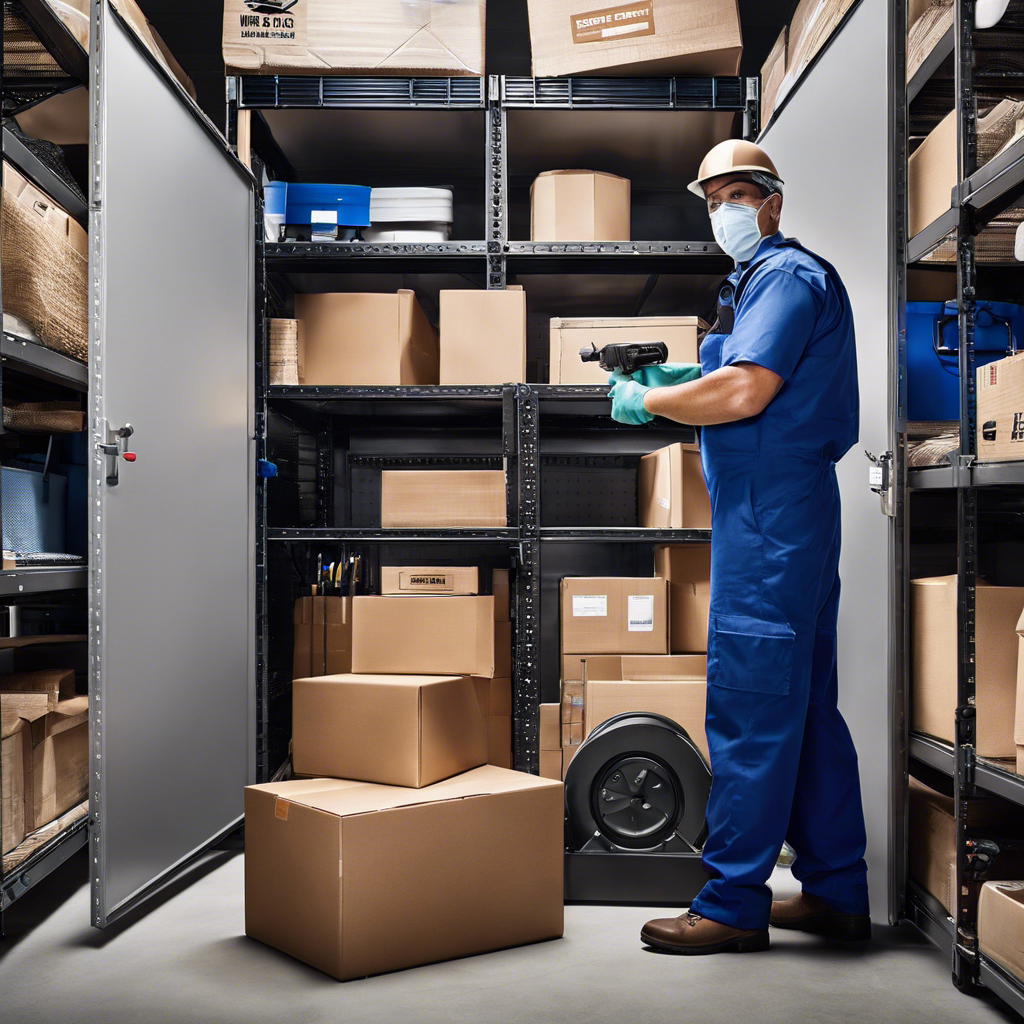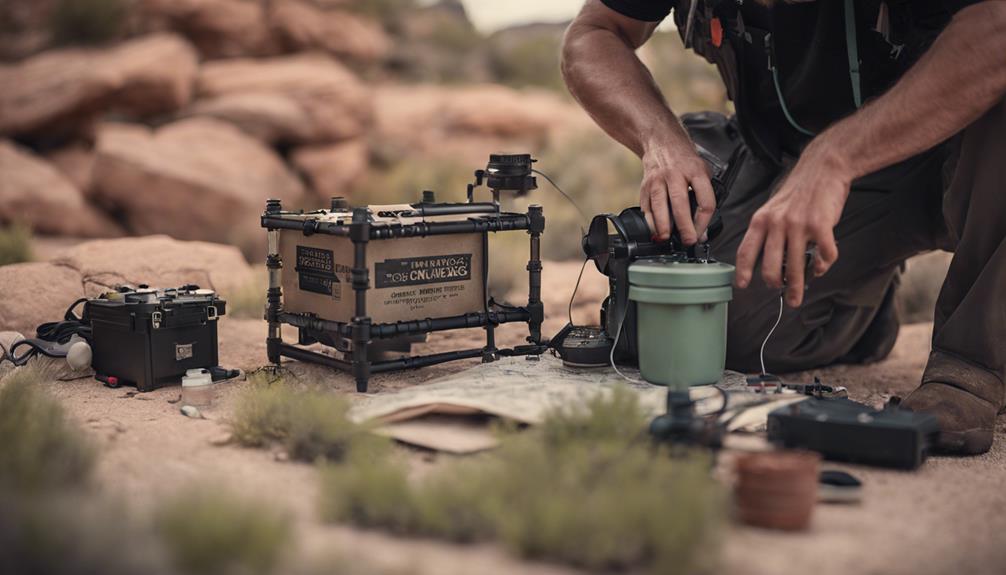Pest control is an essential aspect of maintaining the integrity and safety of St. George storage facilities. With the goal of protecting stored items from damage and infestations, it is crucial for storage facilities to prioritize pest prevention and management.
Common pests such as spiders, cockroaches, scorpions, ants, and rodents can pose a significant threat to the belongings stored in these facilities. By implementing a comprehensive pest control policy and partnering with professional pest control companies, storage facilities can ensure a clean and pest-free environment for their customers.
Additionally, utilizing proper storage containers, practicing correct item storage techniques, and elevating possessions off the ground can further enhance the prevention of pest damage.
Through these measures, storage facility owners and operators can provide a sense of security and belonging to their customers.
Key Takeaways
- Proper pest control measures are crucial in storage facilities to safeguard stored items from damage and infestations.
- Pests such as spiders, cockroaches, scorpions, ants, and rodents can quickly infest storage units and cause significant harm to stored belongings.
- Using airtight plastic containers and avoiding storing food items in the units can help prevent pests from accessing and damaging stored items.
- Both the storage facility and tenants share responsibility in preventing infestations and should regularly inspect the units for signs of pest activity and report any issues to facility management.
Importance of Pest Control in Storage Facilities
The importance of pest control in storage facilities lies in its ability to safeguard stored items from damage and infestations. Storage facilities are susceptible to pests such as spiders, cockroaches, scorpions, ants, and rodents, which can cause significant harm to stored items. These pests can chew through packaging, contaminate food, and destroy furniture and fabrics.
Without proper pest control measures, storage units can quickly become breeding grounds for these unwanted visitors. Plastic containers are often recommended for storage, as they are less likely to attract pests than cardboard boxes. However, even with plastic containers, it is crucial to maintain good pest control practices to keep pests at bay.
Professional pest control companies can provide regular inspections, treatments, and maintenance activities to prevent pest damage and infestations in storage facilities. By implementing effective pest management strategies, storage facilities can ensure the safety and preservation of stored items.
Tips for Pest-Proofing Your Storage Unit
To effectively pest-proof your storage unit, begin by implementing preventative measures.
One of the most important steps is to avoid storing any food items in your unit. This includes perishable food as well as non-perishable items like pet food or snacks. Pests are attracted to food sources, so keeping them out of your storage unit is crucial.
Instead, opt for plastic bins or storage containers that have airtight seals to keep pests out. Avoid using cardboard boxes, as pests and rodents can easily chew through them.
Additionally, make sure to properly seal and store all items, especially those that have a strong scent or are made of upholstered material.
Regularly inspect your storage unit for signs of pest activity and promptly report any issues to the facility management.
Consider contracting a reputable pest control service for regular inspections and treatments to keep your storage unit pest-free.
Responsible Parties in Case of Pest Damage
When addressing pest damage in storage facilities, it is essential to determine the parties responsible for any potential infestations or resulting damage. In most cases, the responsibility for pest control falls on the storage facility itself. It is the facility’s duty to maintain a clean and pest-free environment to protect the stored items. This includes regular pest control measures such as inspections, treatments, and preventive measures.
However, it is also important for tenants to take responsibility for their stored items. They should ensure that their belongings are clean and not infested before placing them in storage. Additionally, tenants should report any signs of pests or damage to the facility management immediately to avoid further infestations and minimize potential damage.
Pest Control Options for Storage Facilities
A comprehensive range of pest control options is available for storage facilities in St. George. To effectively protect stored items from damage and infestations, it is important to implement preventive measures and regular inspections.
Encourage renters to store their items in airtight plastic containers to create a barrier against pests. Additionally, consider using natural pest deterrents like essential oils, which can repel insects without the need for chemicals.
Regularly inspect the facility for signs of rodent activity and promptly address any issues. Cleaning the storage facility regularly is also crucial to discourage pests from nesting or finding a food source.
Bed bugs, bugs, and rodents are common pests that can cause damage, so taking proactive steps in preventing pests is essential for maintaining a pest-free environment in storage facilities.
How to Keep Bugs and Rodents Out of Storage Units
In order to effectively keep bugs and rodents out of storage units in St. George, it is essential to implement preventative measures and maintain a clean and well-maintained facility.
Pest control should be a priority in storage facilities to protect stored items from damage and infestations. One important step is to use airtight plastic containers or sturdy moving boxes to store items. This helps to prevent pests from accessing the stored goods.
Additionally, it is crucial to avoid storing food items in the storage units, as they can attract bugs and rodents. Elevating stored items a few inches off the ground using open shelving or clean pallets can also help keep pests out. Covering mattresses and upholstered furniture with plastic covers further prevents infestation.
Lastly, utilizing natural pest deterrents, such as essential oils like peppermint or eucalyptus, can help repel insects. By implementing these measures and maintaining a clean facility, St. George storage facilities can effectively keep bugs and rodents out of storage units, ensuring the protection of stored items.
Frequently Asked Questions
How Do I Protect My Storage Unit From Bugs?
To protect your storage unit from bugs, utilize natural remedies, pest prevention techniques, sealing methods, insect repellents, proper ventilation, regular pest inspections, pest-proof containers, thorough cleaning practices, temperature control, and consider professional pest control services.
How Do I Keep Bugs Out of My Storage Building?
Preventive measures such as sealing entry points, using effective insecticides, and natural pest repellents can help keep bugs out of storage buildings. Regular inspections, proper ventilation, and cleaning are also important, as well as storing items in airtight containers and pest-resistant materials. Professional pest control services can provide further assistance.
Is a Storage Facility Responsible for Rodent Damage?
Liability concerns regarding rodent damage in storage facilities depend on the terms of the rental agreement and applicable laws. Implementing pest prevention measures, property maintenance responsibilities, and pest inspection requirements can minimize infestations. Educating tenants on prevention and offering insurance coverage is recommended. Proper pest control protocols can protect the facility’s reputation and minimize financial risks.
How Do You Control Stored Product Pests?
Effective prevention of stored product pests in storage facilities involves implementing integrated pest management strategies, such as regular inspections, proper sanitation, pest-resistant storage containers, climate control measures, and natural deterrents. Professional pest control services, educating tenants on pest prevention, and monitoring for early detection are also crucial.




